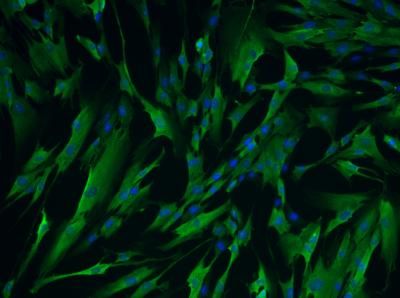Tailoring of pharmaceuticals against asthma
Researchers at Karolinska Institutet in Sweden have managed to elucidate the crystal structure of a human membrane protein TC4 synthase which has a major influence on the development of asthma. LTC4 synthase is extremely difficult to analyze, and previously only low resolution information has been available on two membrane protein structures from human. The scientists now believe that their work will enable the development of new and better therapeutics against inflammations in the pulmonary tract.
Asthma attacks are caused by an acute inflammatory reaction in the airways, a reaction that is largely due to actions of LTC4 synthase. For this reason asthma medicines often aim at blocking the downstream effects of LTC4 synthase. However, there is a need for new pharmaceutical alternatives, since not all patients respond to the existing medicines.
Scientists at the Department of Medical Biochemistry and Biophysics have now, with the help of the two EU networks EICOSANOX and E-Mep, elucidated the three dimensional structure of the LTC4 synthase at 2.0 Å resolution. It is clear from the structure that the protein has three identical subunits, each of them consisting of four spiral structures that span the nuclear membrane. Also the exact position and characteristics of the active sites, where activating or blocking molecules can bind, have been identified. With this knowledge it is now possible to tailor new molecules that can block the LTC4 synthase.
The new results are also very important as they can lead the way for the development of new and more effective therapeutics against other diseases. Some 40 % of the proteins of interest for pharmaceutical developments are membrane proteins. Until now detailed structural information on these proteins has been absent, and therefore it has been difficult to fully understand their function. The present study is likely to lead the way for the determination of structures of other human membrane proteins. The elucidation of more membrane protein structures will help us understand fundamental processes that take place in the cell membranes.
Organizations
Other news from the department science
These products might interest you

Hydrosart® Ultrafilter by Sartorius
Efficient ultrafiltration for biotech and pharma
Maximum flow rates and minimum protein loss with Hydrosart® membranes

Hydrosart® Microfilter by Sartorius
Hydrophilic microfilters for bioprocesses
Minimal protein adsorption and high flow rates

Sartobind® Rapid A by Sartorius
Efficient chromatography with disposable membranes
Increase productivity and reduce costs with fast cycle times

Sartopore® Platinum by Sartorius
Efficient filtration with minimal protein adsorption
Reduces rinsing volume by 95 % and offers 1 m² filtration area per 10"

Polyethersulfone Ultrafilter by Sartorius
Reliable filtration with PESU membranes
Perfect for biotechnology and pharmaceuticals, withstands sterilisation and high temperatures

Polyethersulfone Microfilter by Sartorius
Biotechnological filtration made easy
Highly stable 0.1 µm PESU membranes for maximum efficiency

Get the life science industry in your inbox
From now on, don't miss a thing: Our newsletter for biotechnology, pharma and life sciences brings you up to date every Tuesday and Thursday. The latest industry news, product highlights and innovations - compact and easy to understand in your inbox. Researched by us so you don't have to.




















































